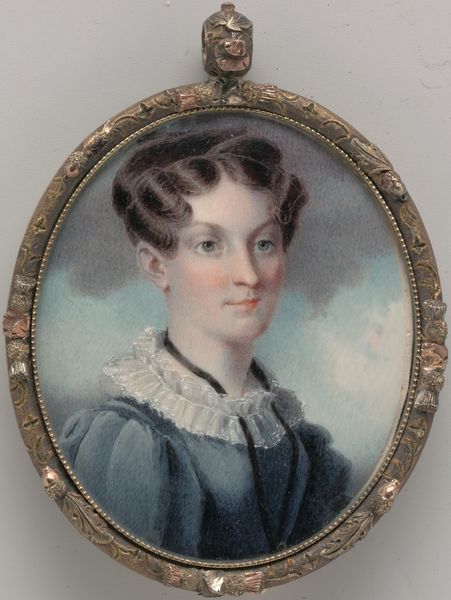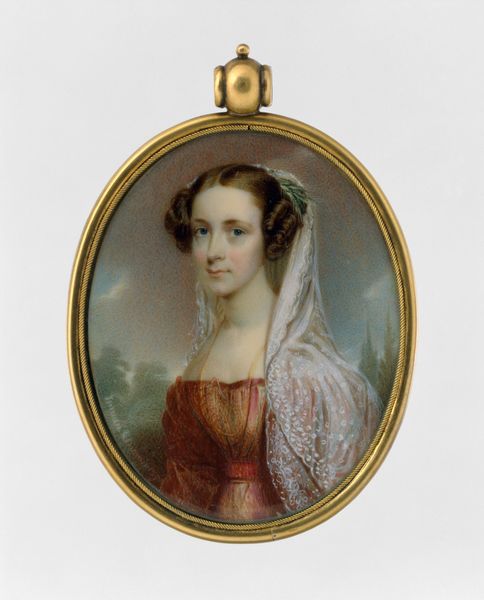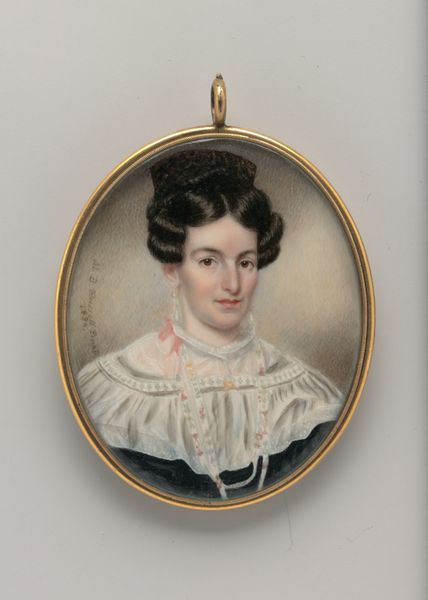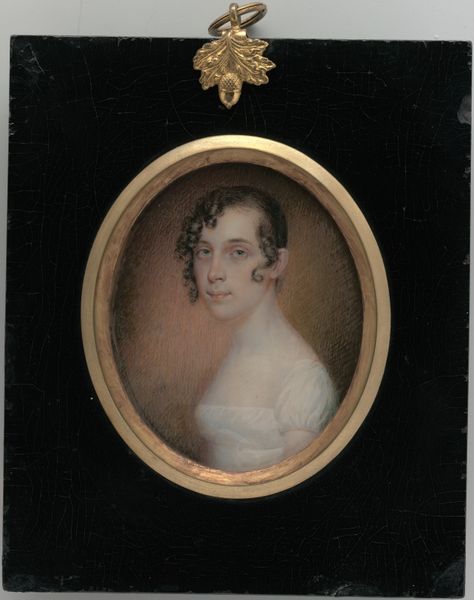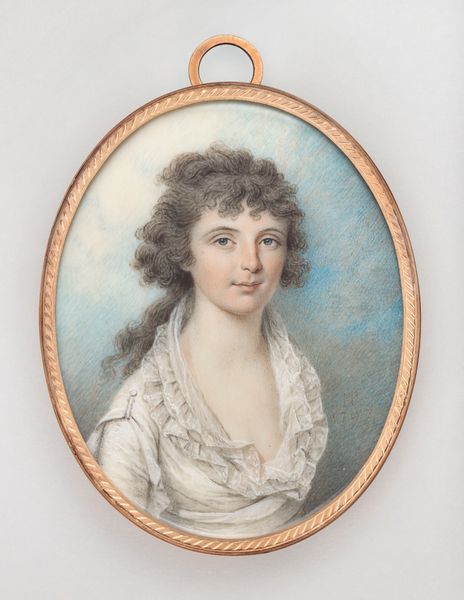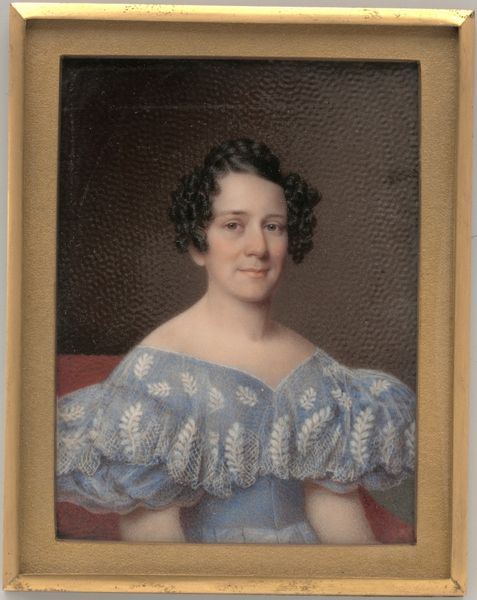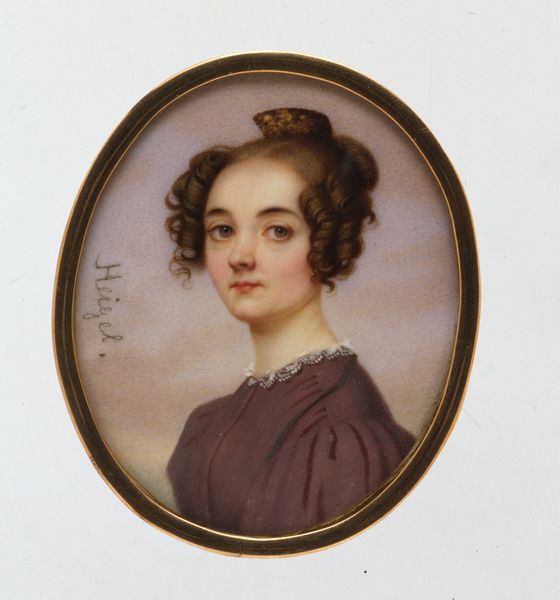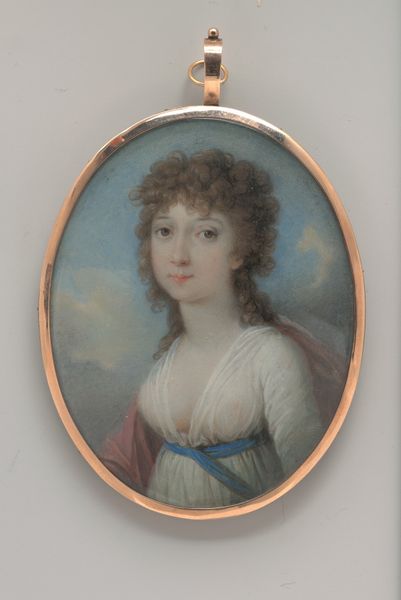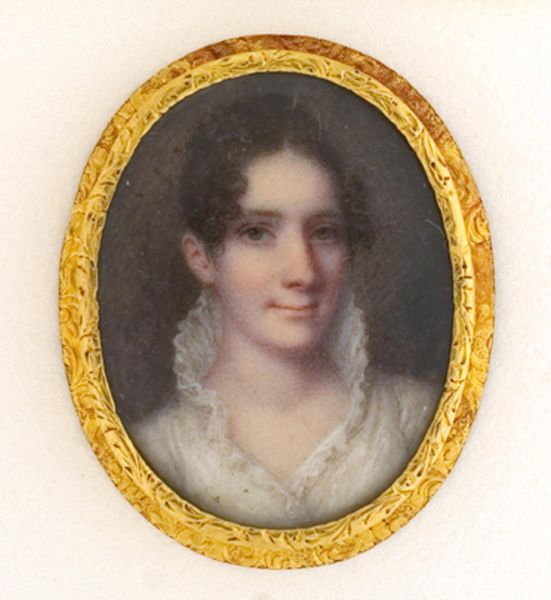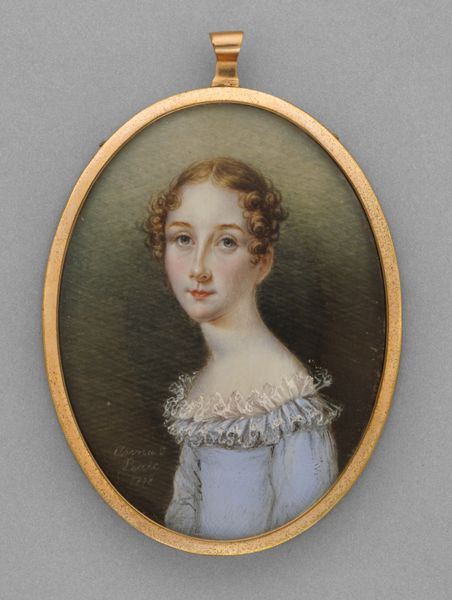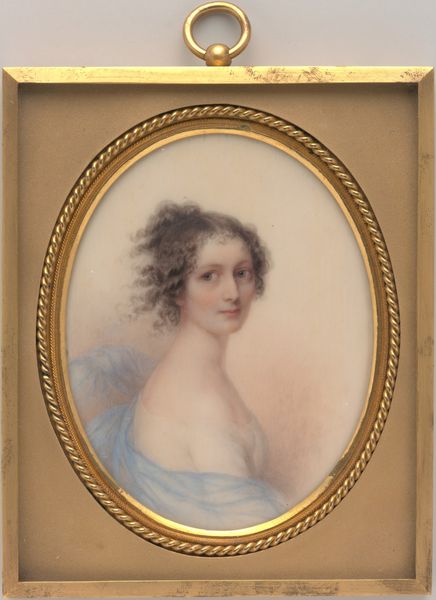
painting, watercolor
#
portrait
#
painting
#
watercolor
#
coloured pencil
#
underpainting
#
romanticism
#
miniature
Dimensions: 3 3/8 x 2 3/8 in. (8.6 x 6 cm)
Copyright: Public Domain
Editor: We’re looking at Henry Inman's "Portrait of a Lady," dating from around 1825. It’s a delicate miniature, watercolor on ivory, housed here at the Met. I'm really struck by the detail he achieves, especially given the scale. What catches your eye about it? Curator: The material processes are fascinating here. Forget the idealised romanticism; I see the artist's labor. Consider the ivory support – where did that come from? The violent extraction, the trade routes, the social hierarchies enabling its acquisition. Then, the watercolor itself: pigments painstakingly ground, bound, applied with meticulous precision. This wasn’t just artistic inspiration; it was a *craft*, tied to global resource chains and the patronage system. Editor: So, you're thinking less about the sitter and more about what it took to *make* the artwork itself? Curator: Precisely. Who was commissioning these miniatures? What did owning this signify in terms of class and social status? Think about the frame too - the gold leaf, another layer of extraction and exploitation. These objects are embedded in networks of power and commodity exchange. How does that knowledge affect your interpretation of her placid expression? Editor: I see what you mean. Knowing the cost – literally – of creating such an intimate object adds a certain weight. It feels less like a sentimental keepsake and more like a statement of wealth. Curator: Exactly. The materials *speak*. And they whisper tales of the economic realities that underpin seemingly beautiful artworks. I keep wondering about the person responsible for meticulously painting this artwork with such refinement! Editor: That's given me a whole new perspective. I’ll definitely look at materials in a different light from now on. Curator: Me too.
Comments
No comments
Be the first to comment and join the conversation on the ultimate creative platform.
